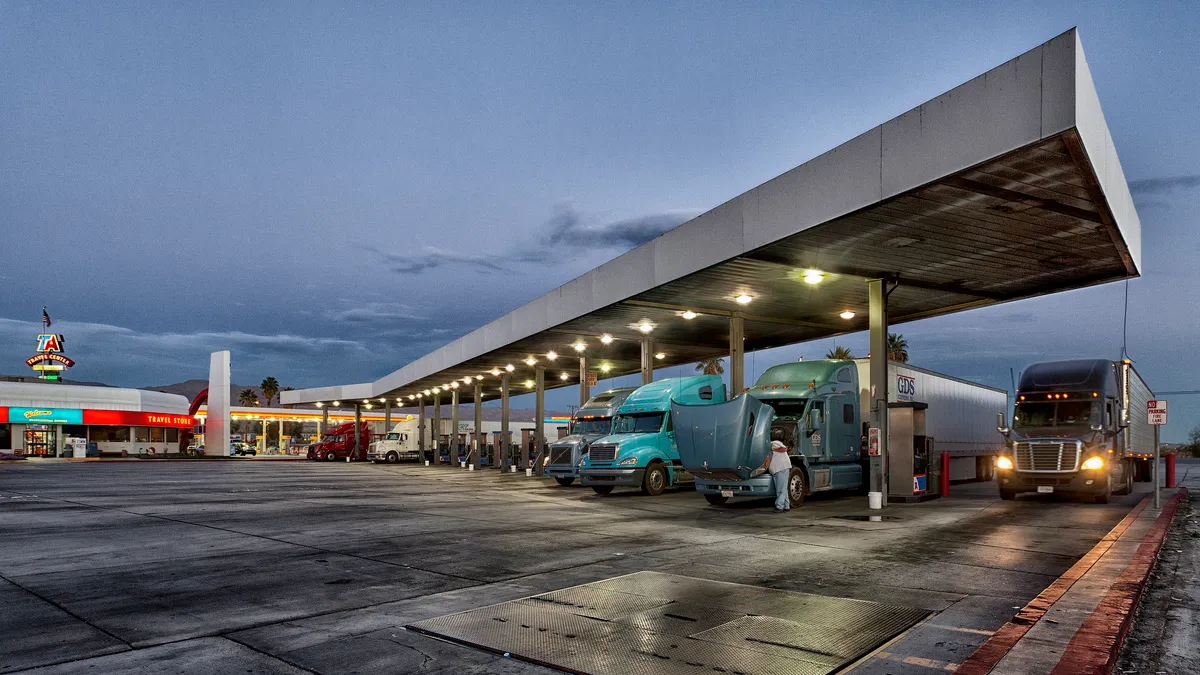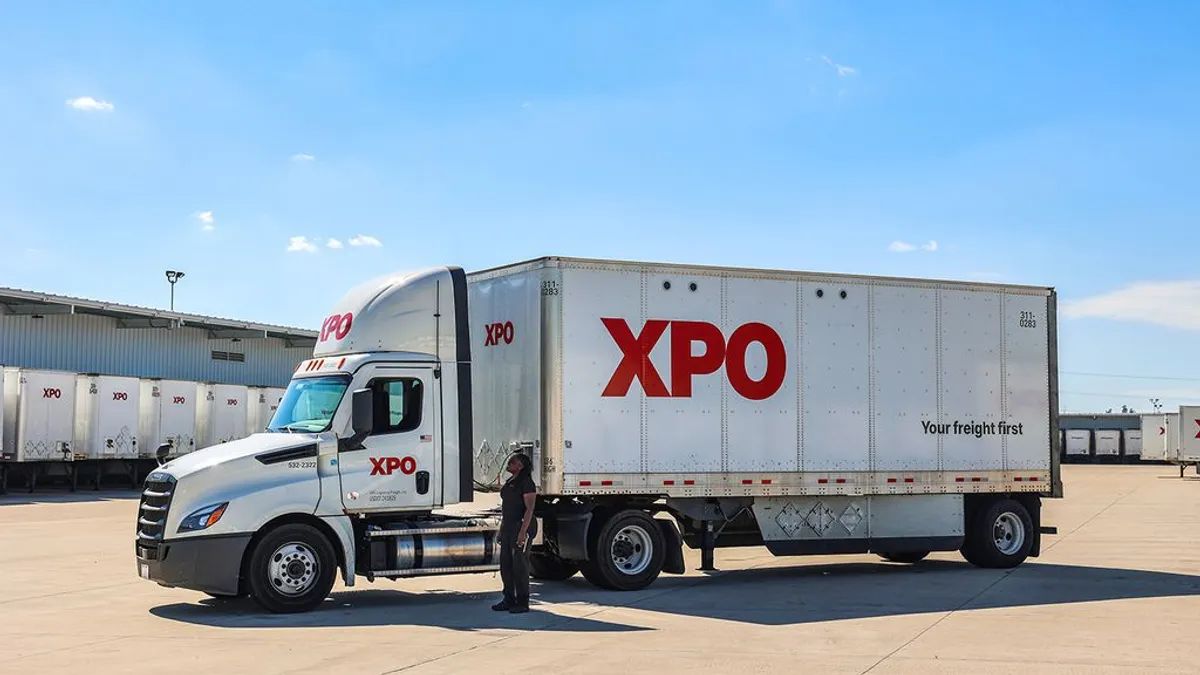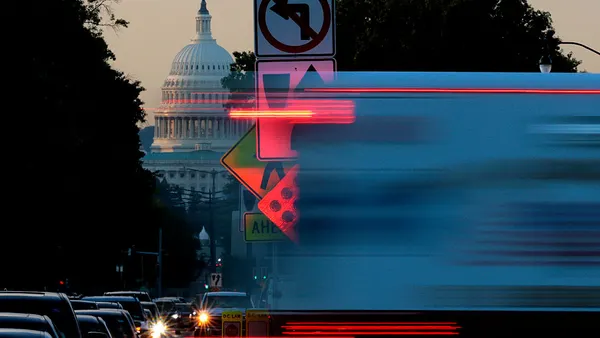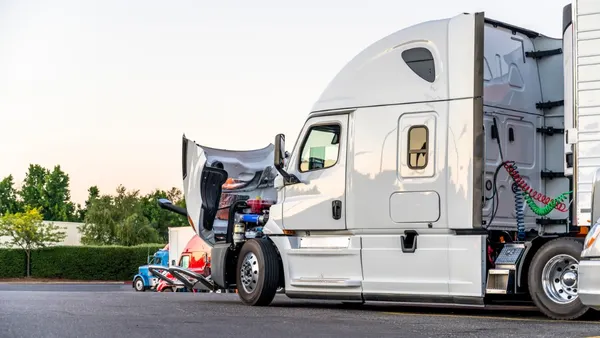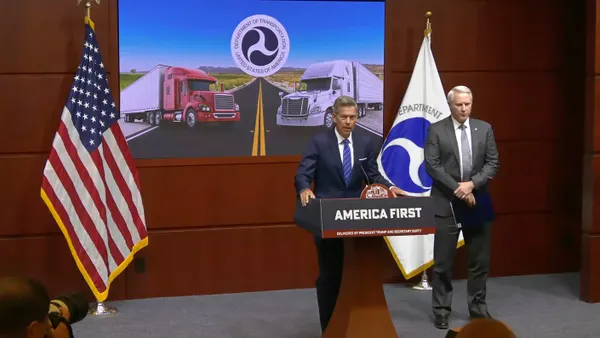NASHVILLE — For OTR truckers, truck stops are just as much a part of the journey as roads and bridges.
Drivers discussed what they desire most at those facilities during the American Trucking Associations' Management Conference & Exhibition. Here are three of the changes they said they'd like to see:
1. Ample parking spots
Truck parking ranked as the No. 1 issue for drivers and owner-operators (tied with compensation) in the American Transportation Research Institute's "Critical Issues in the Trucking Industry" 2021 report. It was a natural topic of discussion on a panel of four truck drivers.
Some drivers stop driving earlier in the day to ensure they have enough time to find parking, said Tim Chelette, truck driver for Big G Express. Parking is most difficult from 4 p.m.-5 a.m, according to drivers in the Federal Highway Administration's 2019 Jason's Law truck parking survey.
Yellow driver Steve Fields agreed drivers sometimes shut down early to park. But if they could easily find spaces to park after 6 p.m. or 7 p.m., they could have driven 100 more miles that day.
"That's slowing down our supply chain," Fields said.
Love's Travel Stops has been on a spree of opening new locations. In the last six months, the company has opened truck stops in Colorado, Georgia, Florida, Illinois, Louisiana, Michigan, Mississippi, Ohio, Oklahoma and Tennessee. Some locations opened with more than 200 truck parking spots.
Fields said sometimes tractor-trailers arrive to a truck stop, only to find six or seven bobtails occupying parking spots.
"I wish the truck stop ownership would take note of that," Fields said.
2. Healthy and quick food options
Panelists said the variety and healthiness of food options are getting better at truck stops, but there's still room for improvement.
"It used to be, you go in and they put gravy on everything," Fields said.
Younger truck drivers in particular want more options and healthier choices, according to Fields. The drivers on the panel specifically called out fresh fruits and vegetables and salads as options they'd like.
TravelCenters of America noted "freshly prepared salads and sandwiches to fresh fruit," as some of its "grab 'n go" options. It also launched "The Kitchen," which is a fast casual dining option, at some locations.
Truck drivers on the clock often can't spend time sitting down for a long meal at a restaurant. And they don't have the luxury of stopping to park at a grocery store or restaurant to get the food they want, so they're at the mercy of what's available at truck stops.
"As you've noticed, I'm a Latino," said Jorge Chavez, a driver for Jetco Delivery. "I'd really appreciate if they can include on the menu some tamales, some fajitas," he said with a chuckle.
But Chavez followed up with a more serious comment. Truck drivers, like everyone else, have to manage their weight, cholesterol and other aspects of their health that are checked during physical exams.
Long-haul drivers are twice as likely to be obese compared to other U.S. workers, according to the Centers for Disease Control and Prevention. That puts them at risk for diseases such as diabetes and sleep apnea.
3. Easy access and clear signage
Drivers on dedicated routes have their routines and go-to spots to stop. But for OTR routes, drivers need more information as they pull into what could be an unfamiliar truck stop.
Fields bases his decisions on where he wants to stop in part based on how easy it is to get in and out of that truck stop.
And well-marked signs are critical for Tina Peterson, a driver for Ravenwood Transport signed onto FedEx Ground.
"Especially hauling doubles," Peterson said. "There's no making mistakes or taking the wrong turn."



